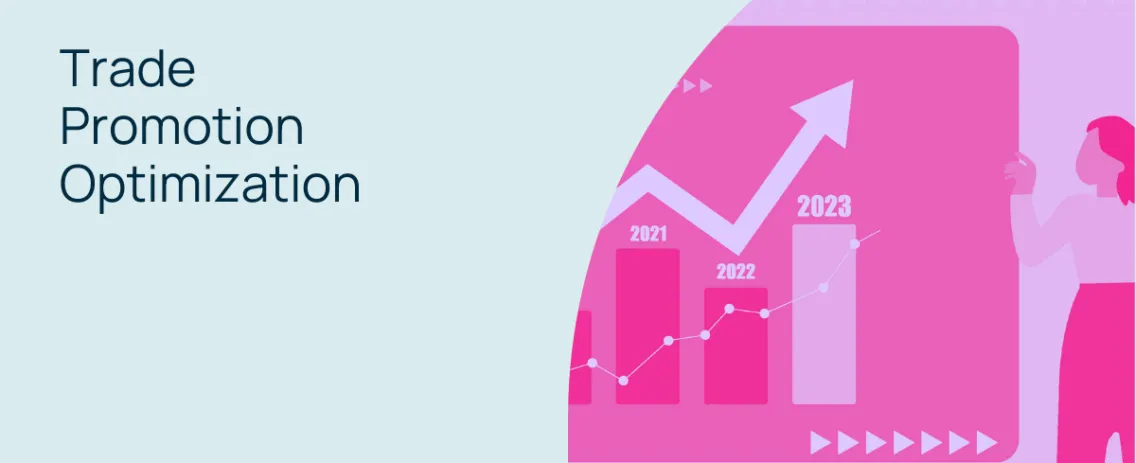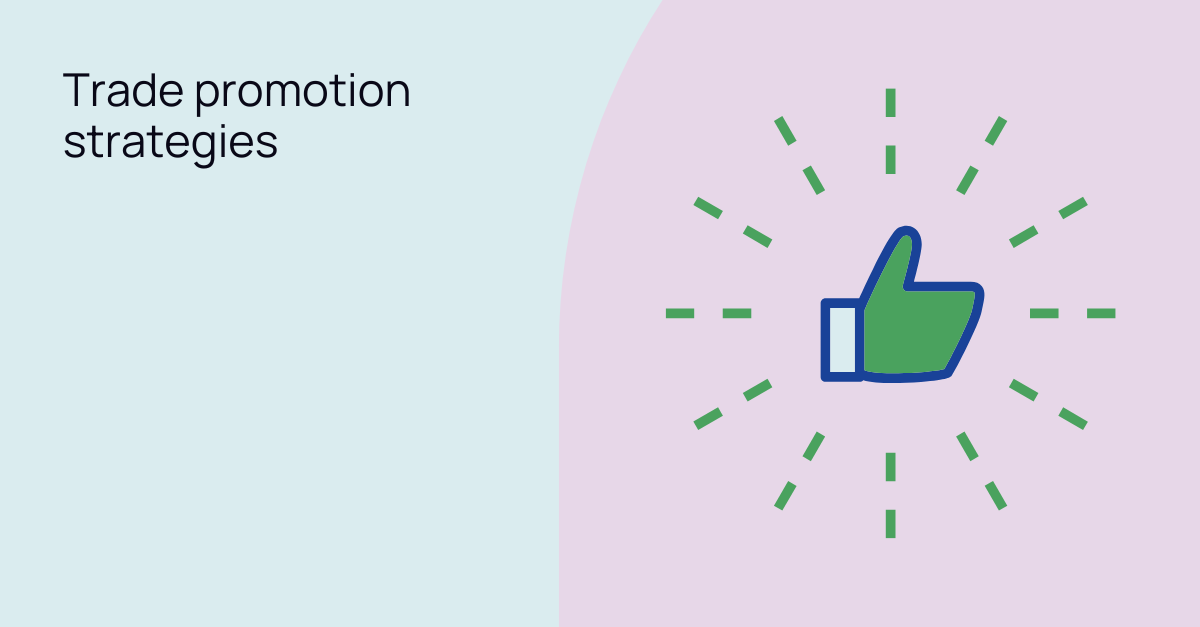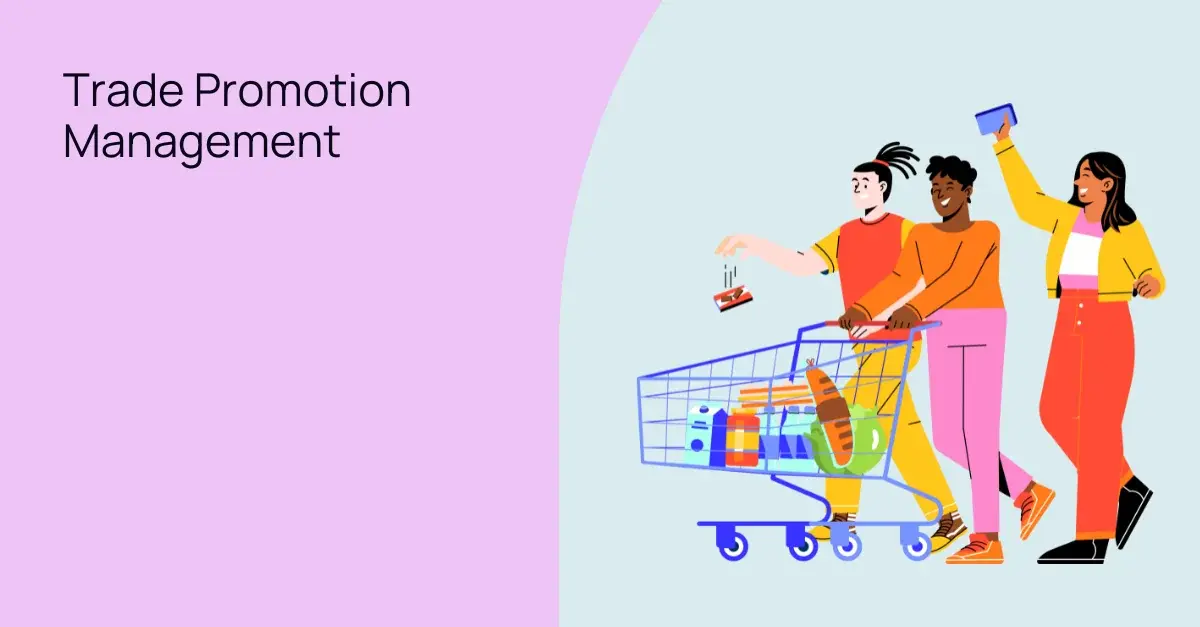
Trade Promotion Optimization: Drawing a winning CPG strategy roadmap
Trade promotions and trade promotion optimization are key to fostering the long-term success of a consumer-packaged goods brand. Innovative trade promotion strategies can keep customers in love with a product and retailers committed to its success.
But if developing a trade promotion strategy or preparing for a retailer meeting means your account team turns to spreadsheets full of cut and pasted data and reworked promotion plans, you might already be on the wrong track.
Legacy approaches—and legacy technology—can mean account professionals spend too much time pulling data from disparate systems. They also spend considerable effort cutting and pasting information into spreadsheets, which is cumbersome and error-prone.
What little time is left is spent simply going through the motions of planning trade promotions each year. Haggling over a fraction of a percent here, a placement there.
This means it’s easy to miss the bigger picture. The one that includes looking for new ways to reach customers with promotions that will delight them. The one that empowers account teams to drill down into data and craft reliable forecasts, creating value in partnership with retailers, and strengthening brands and products for the long-term.
That is why account managers with an eye on the future shouldn’t be thinking about trade promotion management alone, but include trade promotion optimization (TPO) to their repertoire.
Rather than hoping for a few points of sales volume growth from the same promotions every year, the emphasis should be on developing strategies that will maximize ROI, improving trade spend efficiency and nurturing collaboration with retailers.

How trade promotion optimization transforms strategies
Optimizing trade promotion spending begins with pulling together historic data, along with consumer insights, market and syndicated data. And then subjecting this data to advanced analytics and machine learning algorithms. This will uncover historical patterns, which become the starting point for much more accurate forecasts.
This in turn allows account managers to take a more holistic approach to planning. It means they can model the impact of different promotions. It also allows them to incorporate other types of information, such as behavioral and lifestyle data, or even seasonal patterns. This encompasses the full gamut of metrics, such as sales, profit, and market share.
With accurate data and efficient tools, planners can craft and refine smarter promotional strategies in real time. This can inform a more innovative approach to trade promotion strategies, spanning pricing, bundles, placements, and broader marketing.
As the world evolves rapidly, an effective TPO strategy must adapt by integrating new data during ongoing promotions. This enables account managers to assess the effectiveness of trade promotions, adjusting and potentially pausing promotional activities if needed. Such an approach makes optimization an ongoing endeavor, leading to continuous improvement.
The result is a better return on trade investments, both for the manufacturer and retailer, AND better value for consumers.

Common challenges in optimizing trade promotions
Account managers, in theory, have a wealth of data they can draw on to plan their strategies. This includes internal ERP systems and external market and third-party sources. They can leverage this information to inform their planning efforts.
But drawing all this together in a coherent manner is often a challenge. Data might be in different formats, or incomplete. Even if they can pull together reasonably clean data, too often account teams must use homegrown, spreadsheet-based tooling to analyze it and produce their trade promotion forecasting. These can leave professionals bogged down in manual tasks. Such as pulling and cleansing data, only to produce insights that say more about the past than the future.
Alternatively, they may be stuck with nominally integrated, but still clunky suites, often derived from a series of point products. These may force them to switch between different views depending on whether they’re forecasting, planning, or looking to see how their promotions are panning out.
In the absence of a holistic view across all brands, and all promotions, it’s all too easy for account managers to default to a “this is how we’ve always done things around here” approach.
This can mean repeating strategies that worked in the past, or copying plans from the previous year, cutting and pasting even if the data is incomplete. It becomes easier to haggle over placements or fractions of a percent of trade spend, rather than evolving new strategies or promotional techniques to replace those which are no longer delivering.
And while promotion optimization specialists play a crucial role in their company’s success, there are other parties involved too. Siloed systems make it harder to coordinate and collaborate with colleagues within the organization, and partners and suppliers outside.
Either way, precious time and energy is wasted before any forecasts or insights are even developed, or negotiations can begin.
This further limits the capacity professionals have to explore alternative scenarios, develop and test new methods, and importantly, share their findings with colleagues and retail partners. Each of these tasks becomes more challenging due to the reduced bandwidth.
So, trade promotion optimization can require a cultural change, as well as a technological one. But the benefits can be truly transformative.
Some benefits of TPx
Perhaps a more appropriate abbreviation is TPx, or the combination of trade promotion management, forecasting and optimization, all within a single software solution.
The benefits of such an approach are substantial. A broader range of more reliable data, together with cutting-edge analysis, results in more reliable forecasts and more focused planning.
Account managers, and their colleagues and collaborators, gain better visibility across their operations, spotting underperforming promotions and identifying and highlighting new opportunities.
Immediate benefits include improved return on investment on trade promotions and investment in general, and ultimately increased sales growth and profits growth.
Longer term, account managers can develop deeper, more collaborative relationships with retailers, and can refine their go-to-market strategies, optimizing market position, and increasing market penetration.
Read more: The guide to trade promotion excellence in the CPG industry
Winning with trade promotion optimization—your path forward
Optimizing promotions is central to ensuring the success of a CPG portfolio, whether the team is looking at the year ahead, or taking a longer-term view.
Optimizing trade promotions means account teams can develop more accurate forecasts, which means better planning. They can gain full visibility into their strategies, both at the planning and execution stage. The result is a more agile, more efficient approach. One that leads to better performing promotions, improved revenue and profitability, and deeper relationships with retailers and consumers.
But achieving this means giving account teams tools that enable them to apply their expertise to the most pressing challenges, rather than trapping them in legacy processes.
Would you like to find out how Visualfabriq’s software suite can free up time to implement trade promotion optimization? Head here to download our brochure or arrange a briefing.



